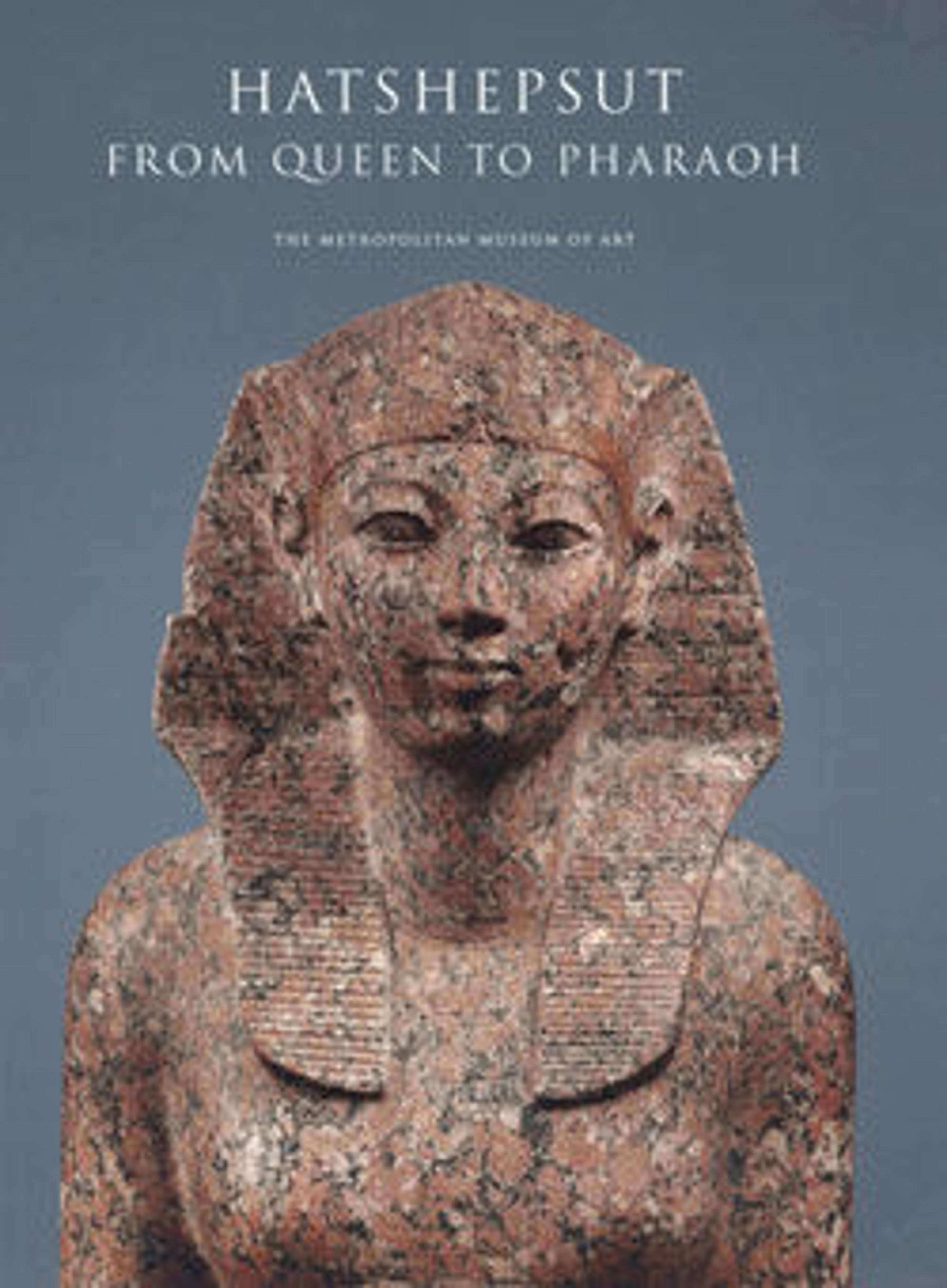Hatshepsut in a Devotional Attitude
For the ancient Egyptians, the ideal king was a young man in the prime of life. The physical reality was of less importance, so an old man, a child, or even a woman who held the titles of pharaoh could be represented in this ideal form, as in this representation of the female pharaoh Hatshepsut. Although many of Hatshepsut's statues depict her as the ideal king, the inscriptions always allude to her feminine gender, sometimes by using both masculine and feminine grammatical forms, sometimes by including her personal name, Hatshepsut, which means "foremost of noble women."
This statue was one of a pair that stood on either side of a granite doorway on the upper terrace of Hatshepsut's temple at Deir el-Bahri. She is represented wearing a king's nemes-headcloth, false beard, and a kilt with a triangular front panel. Her pose, with both hands open and resting on the front of the kilt, is a devotional gesture that was first used in statues of the Middle Kingdom pharaoh Senwosret III who lived some three hundred years before Hatshepsut. Senwosret had dedicated six statues of this type in the temple of the Middle Kingdom's founder, Mentuhotep II, which is just south of Hatshepsut's temple. As happened throughout Egyptian history, the official architecture and sculpture produced in Hatshepsut's reign was influenced by prototypes developed in earlier periods.
Statues that were in more prominent positions in Hatshepsut's temple, such as this one, the sphinxes (31.3.166), and the colossal kneeling statues (29.3.1), all portray Hatshepsut as the ideal king. Several others that may have been placed in less public areas such as the chapels on the upper terrace, depict her in a more feminine form including a seated statue in hard white limestone (29.3.2), and a granite statue which depicts here as a woman (29.3.3).
This statue was one of a pair that stood on either side of a granite doorway on the upper terrace of Hatshepsut's temple at Deir el-Bahri. She is represented wearing a king's nemes-headcloth, false beard, and a kilt with a triangular front panel. Her pose, with both hands open and resting on the front of the kilt, is a devotional gesture that was first used in statues of the Middle Kingdom pharaoh Senwosret III who lived some three hundred years before Hatshepsut. Senwosret had dedicated six statues of this type in the temple of the Middle Kingdom's founder, Mentuhotep II, which is just south of Hatshepsut's temple. As happened throughout Egyptian history, the official architecture and sculpture produced in Hatshepsut's reign was influenced by prototypes developed in earlier periods.
Statues that were in more prominent positions in Hatshepsut's temple, such as this one, the sphinxes (31.3.166), and the colossal kneeling statues (29.3.1), all portray Hatshepsut as the ideal king. Several others that may have been placed in less public areas such as the chapels on the upper terrace, depict her in a more feminine form including a seated statue in hard white limestone (29.3.2), and a granite statue which depicts here as a woman (29.3.3).
Artwork Details
- Title:Hatshepsut in a Devotional Attitude
- Period:New Kingdom
- Dynasty:Dynasty 18
- Reign:Joint reign of Hatshepsut and Thutmose III
- Date:ca. 1479–1458 B.C.
- Geography:From Egypt, Upper Egypt, Thebes, Deir el-Bahri, Senenmut Quarry, MMA excavations, 1927–28
- Medium:Granite, paint
- Dimensions:H (without base) 242 cm (95 1/4 in); w. (of base) 74 cm (29 1/8 in); d. 111 cm (43 11/16 in)
- Credit Line:Rogers Fund, 1928
- Object Number:28.3.18
- Curatorial Department: Egyptian Art
More Artwork
Research Resources
The Met provides unparalleled resources for research and welcomes an international community of students and scholars. The Met's Open Access API is where creators and researchers can connect to the The Met collection. Open Access data and public domain images are available for unrestricted commercial and noncommercial use without permission or fee.
To request images under copyright and other restrictions, please use this Image Request form.
Feedback
We continue to research and examine historical and cultural context for objects in The Met collection. If you have comments or questions about this object record, please contact us using the form below. The Museum looks forward to receiving your comments.
